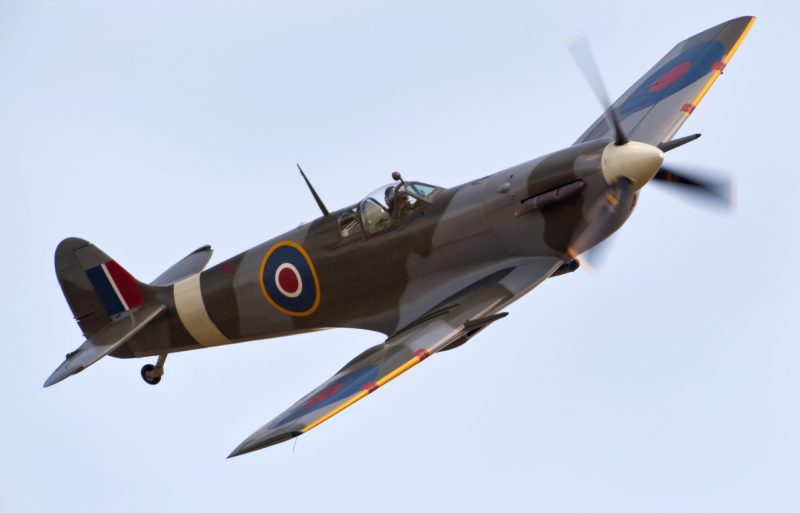
The famous fighter aircraft, the British Spitfire, has not been officially in use for many years — but it could be making news again soon.
Two pilots, Matt Jones and Steve Brooks, intend to circumnavigate the globe in an original Spitfire for the 80th anniversary of the famous fighter. Jones and Brooks will launch from southern England on the first leg of a journey that will take them around the world and across 30 different countries.
This adventure will also be a first for the aircraft since a Spitfire has never successfully made it around the world.
Jones and Brooks have 150 scheduled stops over several continents that have never seen a Spitfire.
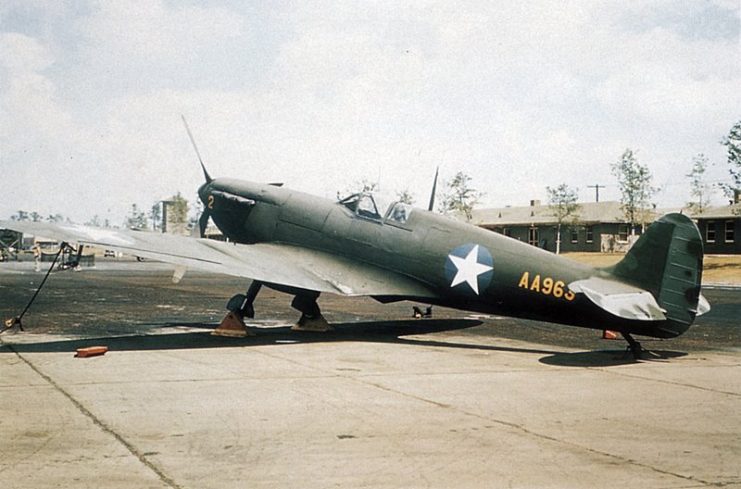
A U.S. Army Air Forces Supermarine Spitfire Mk.Vc (RAF s n AA963) without wheels at Wright Field, Ohio (USA), in 1942.
“It’s an ambitious adventure, but we’re on track and we’ll be ready,” Brooks, 57, told a British newspaper. “The Spitfire is a real icon. The shape of its wings, the sound of its engine. It means so many things to so many people around the world, and we want to take it to as many of them as possible.
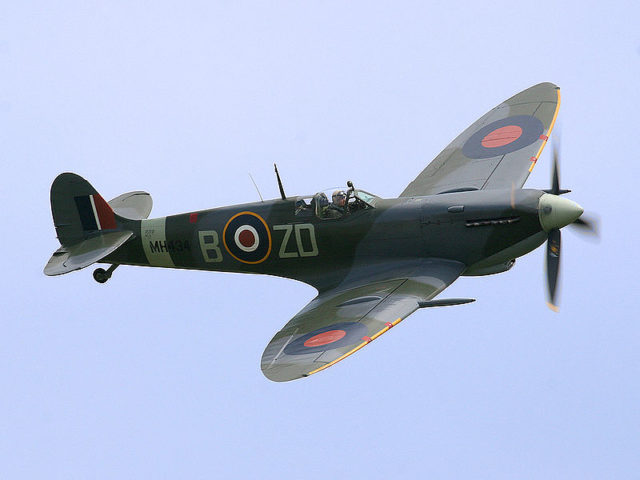
The Classic WW2 British Spitfire. Wikipedia / Bryan Fury75 / CC BY-SA 3.0
The duo bought the Spitfire nine years ago at an auction. They decided to take on the challenge after putting the silver Mark IX plane back together, but not before they created the Boultbee Flying Academy, which claims to be the only training school for Spitfire pilots.
They hope that the Silver Spitfire will be completed next year, and then, pending the results of some test flights, it should be ready for its longest journey in August.

Spitfire MKLFIXe MK356 2a. Photo: Tony Hisgett – CC BY 2.0
Despite the support of the solid mechanical team behind them and their journey, the two pilots remain reasonable regarding their chances. Gerry Jones, one of the aeronautical engineers behind the launch, understands that the Spitfire was not intended for a journey of this magnitude.
He anticipates the plane will need some kind of work every 25 hours. Furthermore, it can only travel 400 nautical miles at a time. That makes this flight a daunting task.
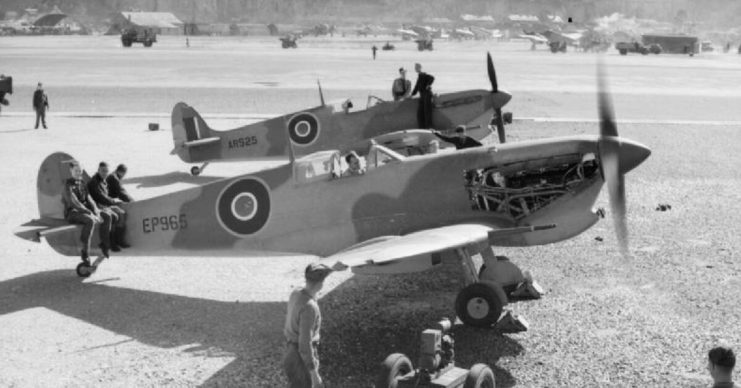
Spitfires under assembly in preparation for Allied entry into North Africa.
Originally designed by RJ Mitchell in the 1930s, the Spitfire was the most popular airplane for the Allies in the Second World War, with production coming in at more than 20,000 in under ten years.
The aircraft saw its greatest victories during the Battle of Britain. The Spitfire, assisted by the bulkier Hurricane, shot down 1,887 German planes over a three-month period.
The Spitfire entered service in 1938 as the fastest aircraft in the RAF, capable of reaching speeds of 350 miles per hour (563 kilometers per hour).
This was gradually increased by 35 percent until, on one occasion in April 1944, a photo reconnaissance version nearly broke the sound barrier by managing to attain a speed of 606 miles per hour (975 kilometers per hour) while in a dive from 40,000 feet (just over one kilometer).
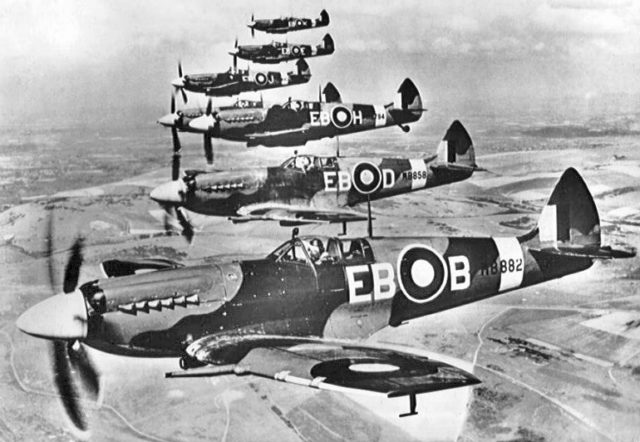
Supermarine Spitfire LF Mk XIIs of 41 Squadron in April 1944.
While being recognized as the fastest plane in the skies, the Spitfire was also exceptionally well-armed compared to other British fighters. While early versions flew out with an armament of .303 Browning guns, carrying 300 rounds, later types packed cannon for a nastier, far more effective hit in aerial combat.
They were agile and easy to maneuver because of their aerodynamic design, elliptical wings, and the responsiveness of the controls. By the time the Battle of Britain came to a close, the Luftwaffe had lost 56 planes, and Hitler had abandoned his intended conquest of Britain.
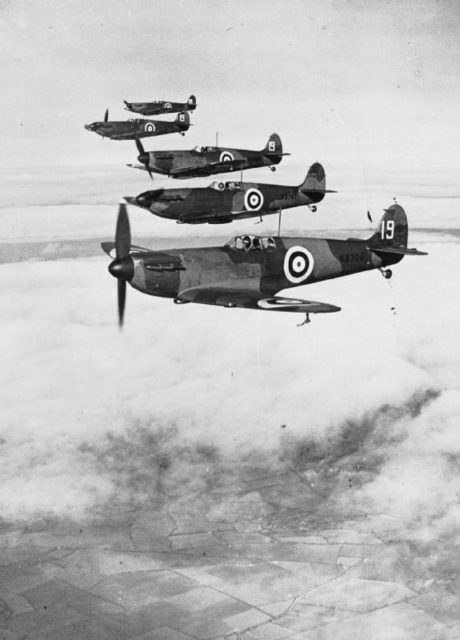
A flight of Spitfires over Britain in 1940.
Hitler may have been finished with Britain, but the Spitfire was not finished with him. Newer versions were faster and more powerful, lending their aid to the crucial moments in the different theatres of the war, including the campaign against General Erwin Rommel, known as the Desert Fox, in 1942.
They also contributed in the Burmese campaign against Japan, and throughout the post-D-Day surge.

Supermarine Spitfire Mk V and pilots of No. 40 Squadron, South African Air Force, at Gabes in Tunisia, April 1943.
With Jones and Brooks at the helm, the world can hope for a glimpse of the next, perhaps final, adventurous journey of this famous World War II aircraft.





